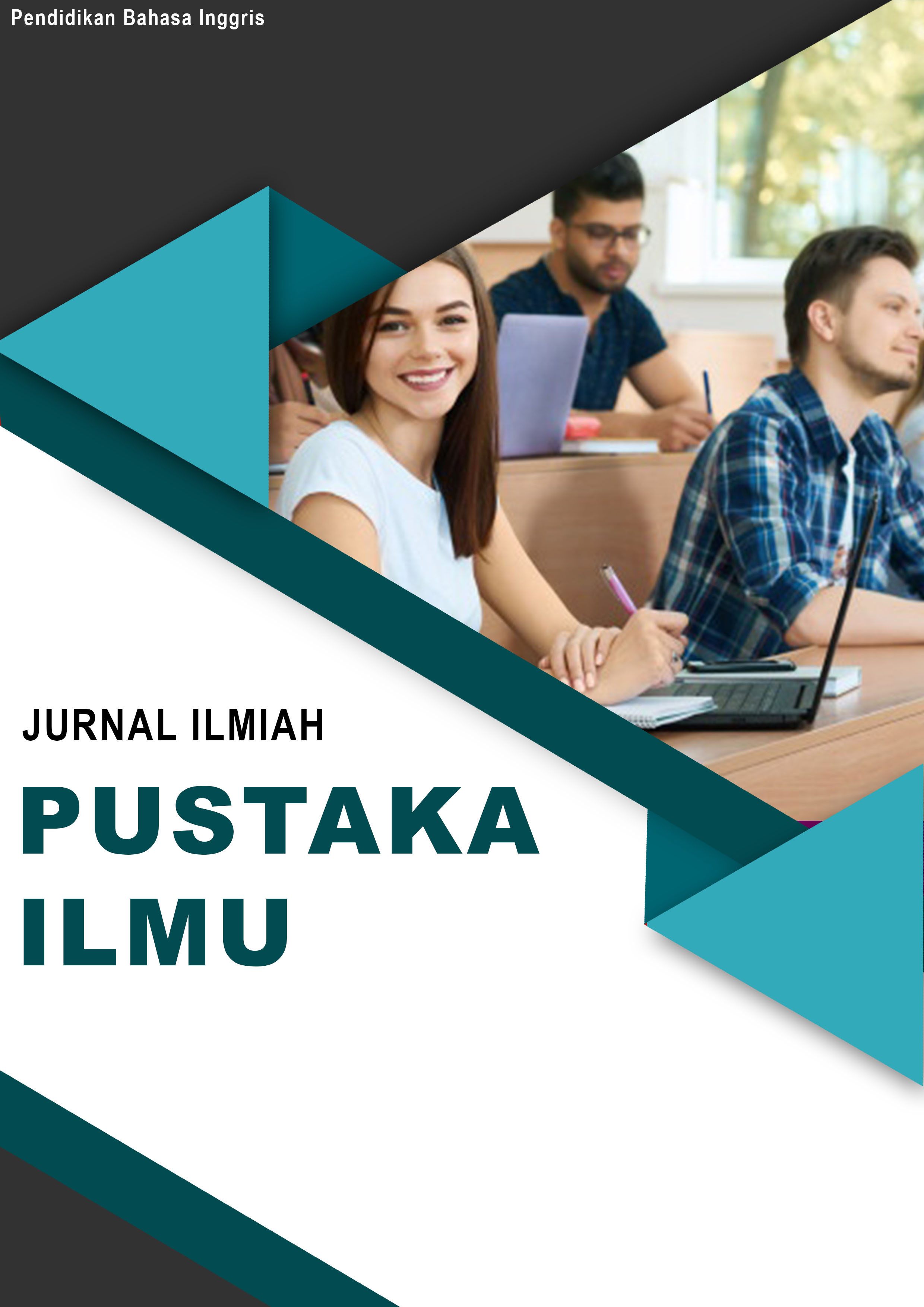A STUDY ON FLOUTING MAXIMS USED BY THE CHARACTERS IN DIVERGENT NOVEL
Kata Kunci:
Flouting, Cooperative Principle, Pragmatics.Abstrak
In this research the researchers focuses on flouting maxim in Divergent novel. The aim of this reseacrh is to find the types and the function of flouting maxim. The researchers uses a descriptive qualitative research because the researchers strives to analyze and discusses the sentences of utterances which performs flouting maxim in Divergent novel. The researchers uses Grice’s theory in analyzing the novel.. Based on the data analysis the researchers concludes: the functions for flouting maxim of quantity are to explain more about topic, to stress something and unwillingness to cooperate; the functions for flouting maxim of quality are to show panic, to convince the addressee and to hide something; the functions for flouting maxim of relevance are to change the topic of conversation and to avoid talking about something.
Referensi
Adelina, C., & Suprayogi, S. (2020). Contrastive Analysis of English and Indonesian Idioms of Human Body. Linguistics and Literature Journal, 1(1), 20–27.
Aminatun, D., Ngadiso, N., & Marmanto, S. (2019). Applying PLEASE strategy to teach writing skill on students with different linguistic intelligence. Teknosastik, 16(1), 34–40.
Aminatun, D., & Oktaviani, L. (2019). Memrise: Promoting students’ autonomous learning skill through language learning application. Metathesis: Journal of English Language, Literature, and Teaching, 3(2), 214–223.
Apriyanti, D., & Ayu, M. (2020). Think-Pair-Share: Engaging Students in Speaking Activities in Classroom. Journal of English Language Teaching and Learning, 1(1), 13–19.
Ayu, M. (2019). Interactive activities for effective learning in overcrowded classrooms. Linguists: Journal of Linguistics and Language Teaching, 4(2), 1–6.
Ayu, M., Diem, C. D., & Vianty, M. (2017). Secondary school students’ English literacy: Use of interactive read aloud instructional strategy. International Journal of Applied Linguistics and English Literature, 6(7), 292–299.
Ayu, M., & Pratiwi, Z. F. (2021). THE IMPLEMENTATION OF ONLINE LEARNING IN ENGLISH LANGUAGE TEACHING DURING PANDEMIC: THE TEACHERS’VOICE. Journal of Research on Language Education, 2(2), 93–99.
Febriantini, W. A., Fitriati, R., & Oktaviani, L. (2021). AN ANALYSIS OF VERBAL AND NON-VERBAL COMMUNICATION IN AUTISTIC CHILDREN. Journal of Research on Language Education, 2(1), 53–56.
Gulö, I. (2014). The Influence of Nias Language to Bahasa Indonesia. Konferensi Linguistik Tahunan Atma Jaya.
Hutauruk, M., & Puspita, D. (2020). A METAPRAGMATIC ANALYSIS: A STUDY OF PRAGMATIC FAILURE FOUND IN INDONESIAN EFL STUDENTS. Linguistics and Literature Journal, 1(2), 62–69.
Kardiansyah, M. Y., & Salam, A. (2021). Reassuring Feasibility of Using Bourdieusian Sociocultural Paradigm for Literary Translation Study. Ninth International Conference on Language and Arts (ICLA 2020), 135–139.
Kardiansyah, M. Y., & Salam, A. (2020). The Translator’s Strategy as a Cultural Mediator in Translating Indonesian Novel into English. 4th International Conference on Language, Literature, Culture, and Education (ICOLLITE 2020), 413–418.
Kuswoyo, H. (n.d.). Advances in Language and Literary Studies Declarative Sentence Pattern In" Laskar Pelangi" And" The Rainbow Troo...
Lestari, M., & Wahyudin, A. Y. (2020). Language learning strategies of undergraduate EFL students. Journal of English Language Teaching and Learning, 1(1), 25–30.
Lubis, M., Khairiansyah, A., Adrian, Q. J., & Almaarif, A. (2019). Exploring the user engagement factors in computer mediated communication. Journal of Physics: Conference Series, 1235(1), 12040.
Mandasari, B., & Agusty, S. T. P. (n.d.). MOBILE LEARNING: THE IMPACT OF WHATSAPP USAGE IN ENGLISH LANGUAGE LEARNING. Section Editors.
Mandasari, B., & Aminatun, D. (2019). STUDENTS’PERCEPTION ON THEIR PARTICIPATION: WHAT AFFECTS THEIR MOTIVATION TO TAKE PART IN CLASSROOM ACTIVITIES? Premise: Journal of English Education and Applied Linguistics, 8(2), 214–225.
Muliyah, P., Aminatun, D., Nasution, S. S., Hastomo, T., & Sitepu, S. S. W. (2020). EXPLORING LEARNERS’AUTONOMY IN ONLINE LANGUAGE-LEARNING IN STAI SUFYAN TSAURI MAJENANG. Getsempena English Education Journal, 7(2), 382–394.
Pranoto, B. E., & Afrilita, L. K. (2019). The organization of words in mental lexicon: evidence from word association test. Teknosastik, 16(1), 26–33.
Pratiwi, Z. F., & Ayu, M. (2020). THE USE OF DESCRIBING PICTURE STRATEGY TO IMPROVE SECONDARY STUDENTS’SPEAKING SKILL. Journal of English Language Teaching and Learning, 1(2), 38–43.
Pustika, R. (n.d.). ARISING BILINGUAL CHILDREN BY PROMOTING SECOND LANGUAGE AWARENESS.
Qodriani, L. U. (n.d.). The Use of Phatic Particle ‘Geh’in Lampungnese’s Indonesian Language.
Rido, A. (2011). LANGUAGE LEARNING THROUGH INTERPRETING AND TRANSLATION: HIGHLIGHTING STUDENTS’EXPERIENCES. Proceedings of the 58th TEFLIN International Conference.
Rido, A., Ibrahim, N., & Nambiar, R. M. K. (2015). Interaction strategies of master teachers in Indonesian vocational classroom: A case study. 3L: Language, Linguistics, Literature®, 21(3).
Rido, A., Kuswoyo, H., & Ayu, R. (2020). Interaction management strategies in English literature lectures in Indonesian university setting. Indonesian Journal of EFL and Linguistics, 5(2), 315–337.
Rido, A., & Sari, F. M. (2018). Characteristics of classroom interaction of English language teachers in Indonesia and Malaysia. International Journal of Language Education, 2(1), 40–50.
Sari, F. M. (n.d.). STUDENTS’PERCEPTION ON THEIR PARTICIPATION: WHAT AFFECTS THEIR MOTIVATION TO TAKE PART IN CLASSROOM ACTIVITIES?
Sari, F. M. (2015). An Analysis of Classroom Interaction in the English Language Teaching Process (A Case Study at the Tenth Grade Students of Accelerated Class 1 and Accelerated Class 3 of SMA Negeri 3 Surakarta). UNS (Sebelas Maret University).
Sari, F. M. (2019). Patterns of teaching-learning interaction in the EFL classroom. Teknosastik, 16(2), 41–48.
Sari, F. M. (2020). Exploring English Learners’ Engagement and Their Roles in the Online Language Course. Journal of English Language Teaching and Linguistics, 5(3), 349–361.
Simamora, M. W. B., & Oktaviani, L. (2020). WHAT IS YOUR FAVORITE MOVIE?: A STRATEGY OF ENGLISH EDUCATION STUDENTS TO IMPROVE ENGLISH VOCABULARY. Journal of English Language Teaching and Learning, 1(2), 44–49.
Suprayogi, S., & Novanti, E. A. (2021). EFL Learner’s Literary Competence Mapping through Reader-Response Writing Assessed using CCEA GCSE Mark Scheme. Celt: A Journal of Culture, English Language Teaching & Literature, 21(1), 1.
Tiono, N. I., & Sylvia, A. (2004). The types of communication strategies used by speaking class students with different communication apprehension levels in English Department of Petra Christian University, Surabaya. K@ Ta, 6(1), 30–46.
Wahyudin, A. Y. (2015). The implementation of scientific method in teaching English as a foreign language at senior high school level. Universitas Pendidikan Indonesia.


